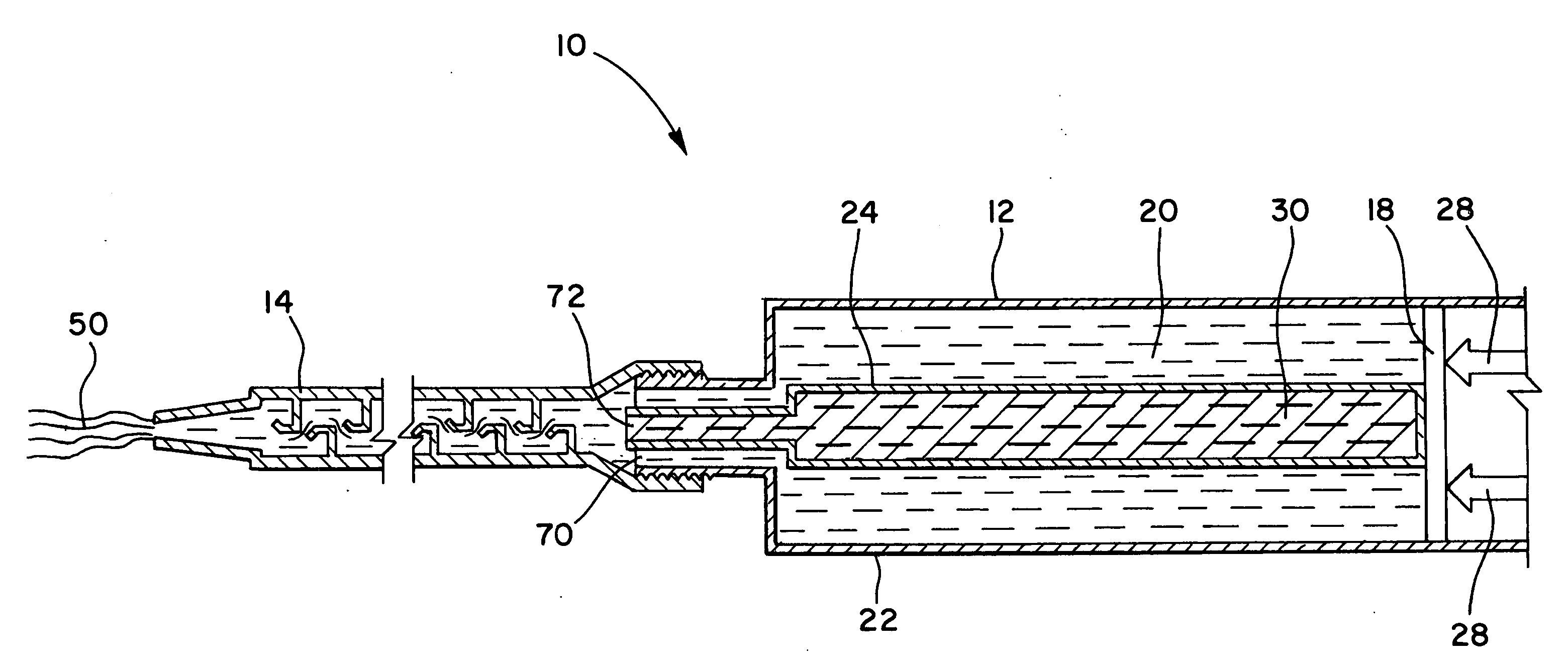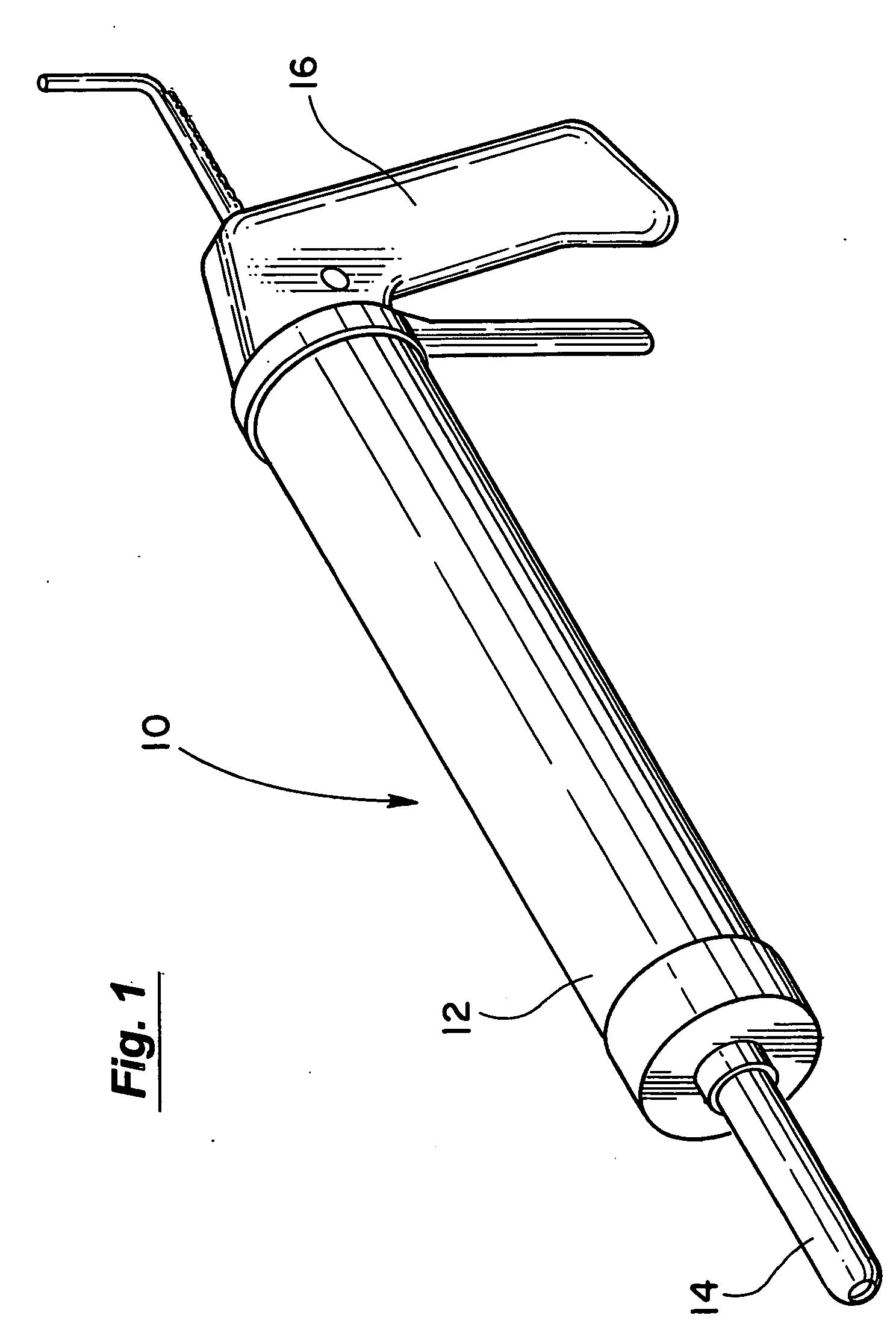Apparatus and methods for mixing caulk and colorant
- Summary
- Abstract
- Description
- Claims
- Application Information
AI Technical Summary
Problems solved by technology
Method used
Image
Examples
Embodiment Construction
[0041] The term “caulk” is used throughout the application, but it will be readily understood that the invention is not limited to any one particular material, and that the material being tinted can be selected from a wide variety of materials such as sealants and adhesives, grouts, chemically reactive resins (for example, epoxy resins and a hardener, or polyester resins and a catalyst; in this application, all types of chemically reactive resins are called “resin” and all types of hardener or catalysts used with such resins are called “curing agents”), mortars, silicious or cementitious materials, wood filler, wood putty, viscous compounds and lubricating materials, paints, colors, and colorants, and even food materials.
[0042] Similarly, the term “colorant” is used throughout the application, but it will be readily understood that the invention is not limited to any one particular material, and that the material being used as a colorant can be selected from a wide variety of mater...
PUM
 Login to View More
Login to View More Abstract
Description
Claims
Application Information
 Login to View More
Login to View More - R&D
- Intellectual Property
- Life Sciences
- Materials
- Tech Scout
- Unparalleled Data Quality
- Higher Quality Content
- 60% Fewer Hallucinations
Browse by: Latest US Patents, China's latest patents, Technical Efficacy Thesaurus, Application Domain, Technology Topic, Popular Technical Reports.
© 2025 PatSnap. All rights reserved.Legal|Privacy policy|Modern Slavery Act Transparency Statement|Sitemap|About US| Contact US: help@patsnap.com



